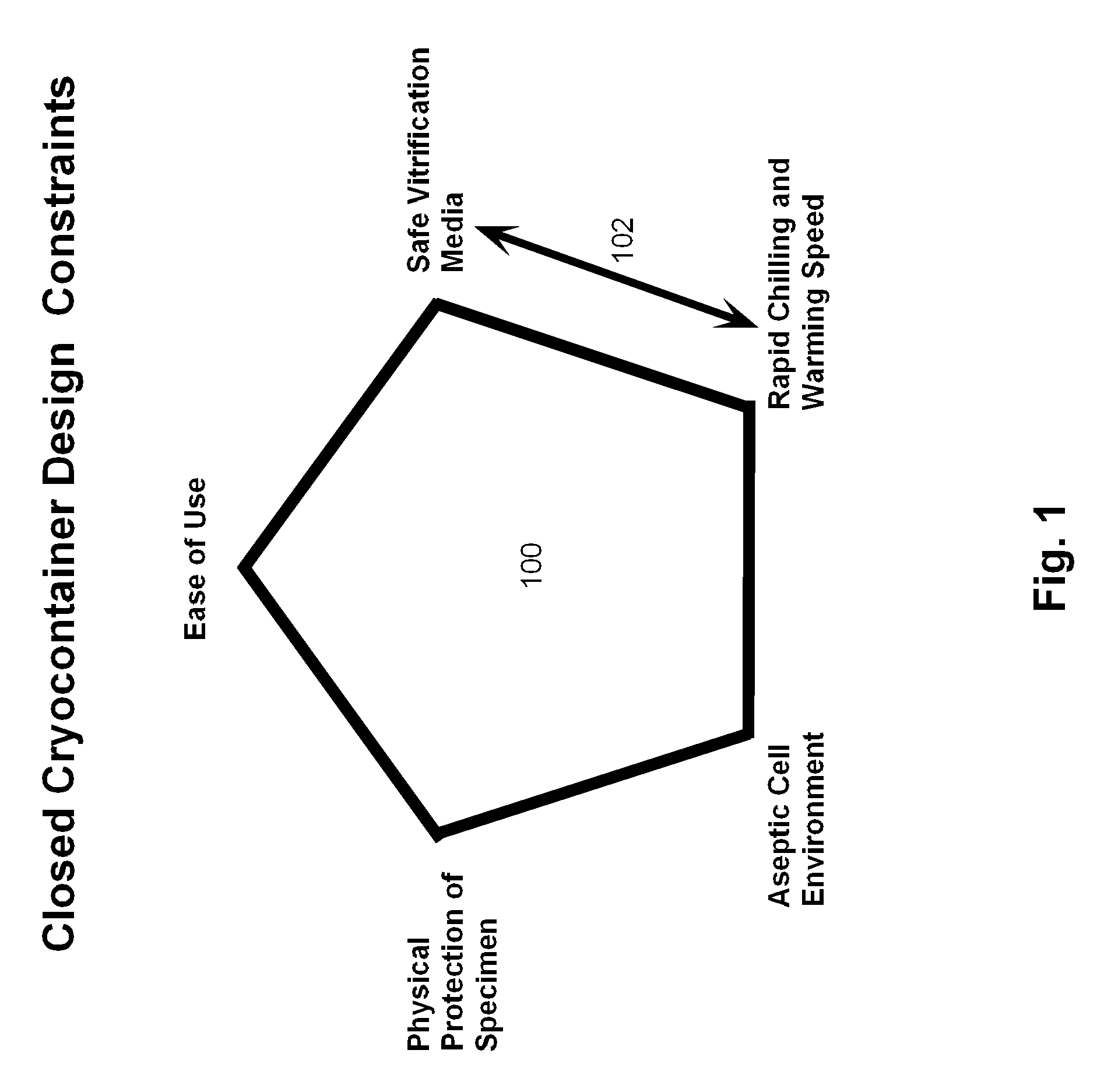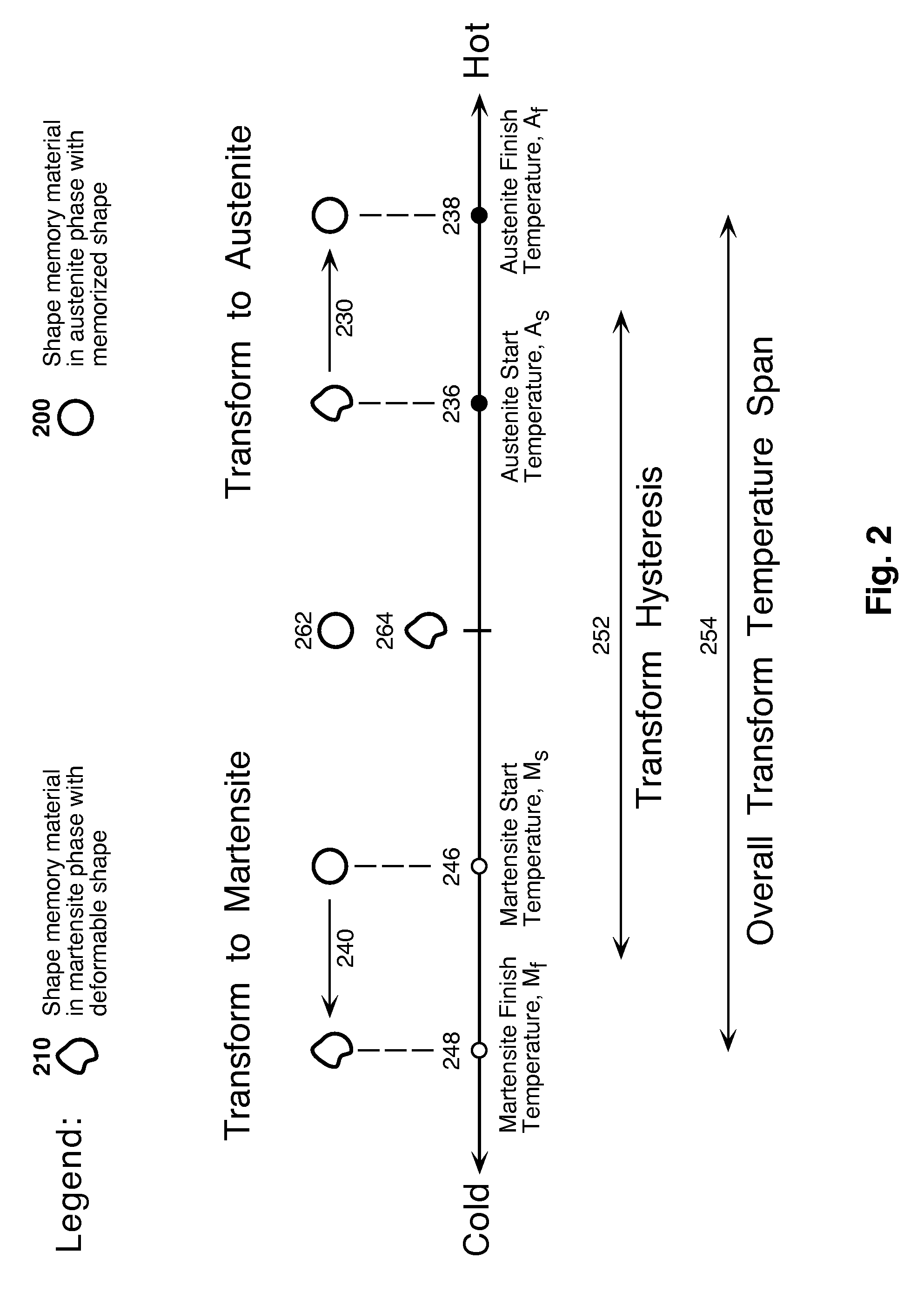Shape-Shifting Vitrification Device
a vitrification device and shape-shifting technology, applied in the field of biological specimen cryopreservation devices, can solve the problems of high equipment cost, high time consumption, and inability to perform as well in high water content cells such as oocytes and blastocysts, and achieve the effect of rapid chilling and ease of loading and unloading
- Summary
- Abstract
- Description
- Claims
- Application Information
AI Technical Summary
Benefits of technology
Problems solved by technology
Method used
Image
Examples
Embodiment Construction
[0032]The following detailed description discloses various embodiments and features of the invention. These embodiments and features are meant to be exemplary and not limiting.
[0033]As used herein, except for temperature and unless specifically indicated otherwise, the term “about” means within ±20% of a given value for a parameter. For temperature, “about” means ±2° C. of a given value.
[0034]A variety of biological cells can be aseptically cryopreserved (vitrified) using the present invention. One category of cells is mammalian developmental cells such as sperm, oocytes, embryos, morulae, blastocysts, and other early embryonic cells. These cells are routinely cryopreserved during assisted reproduction procedures. Another category is stem cells that are used in regenerative therapies. The broadest category is any cell that can be vitrified using a vitrification media that aligns with the available chilling speed of this invention.
Shape Memory Effect
[0035]The shape memory effect exis...
PUM
 Login to View More
Login to View More Abstract
Description
Claims
Application Information
 Login to View More
Login to View More - R&D
- Intellectual Property
- Life Sciences
- Materials
- Tech Scout
- Unparalleled Data Quality
- Higher Quality Content
- 60% Fewer Hallucinations
Browse by: Latest US Patents, China's latest patents, Technical Efficacy Thesaurus, Application Domain, Technology Topic, Popular Technical Reports.
© 2025 PatSnap. All rights reserved.Legal|Privacy policy|Modern Slavery Act Transparency Statement|Sitemap|About US| Contact US: help@patsnap.com



